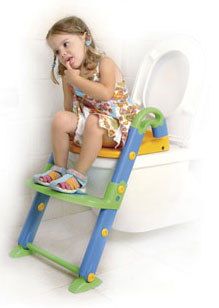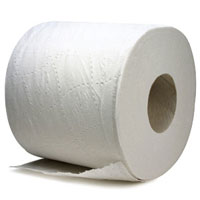Toilet Training Tips

Getting ready
First, decide whether you want to train using a potty or the toilet. There are some advantages to using a potty – it’s mobile and it’s familiar, and some children find it less daunting than a toilet. Try to find out your child’s preference and go with that. Some parents encourage their child to use both the toilet and potty.
Second, make sure you have all the right equipment. If your child is using the toilet you’ll need a step for your child to stand on. You’ll also need a smaller seat that fits securely inside the existing toilet seat, because some children get uneasy about falling in.
Basic steps for toilet training
- Choose a start day, perhaps when you have no plans to leave the house.
- Stop using nappies (except at night and during daytime sleeps). Begin using underpants or training pants. You can even let your child choose some underpants, which can be an exciting step for him.
- Dress your child in clothes that are easy to take off – for example, trousers with elastic waistbands, rather than full body suits. In warmer weather, you might like to leave her in underpants when at home.
- Sit your child on the potty each day at times when he’s likely to have a bowel movement, like 30 minutes after eating or after having a bath.
- Give your child lots of fibre to eat and water to drink so she doesn’t become constipated, which can make toilet training difficult. Your child’s diet is the best way to handle this, rather than buying fibre supplements.
- If your child doesn’t cooperate or seem interested, just wait until he’s willing to try again.
- Give your child positive praise for her efforts (even if progress is slow), and lots of praise when she’s successful. You could say ‘Well done Janey for sitting on the potty’. As she achieves each stage, reduce the amount of praise.
- Look out for signs that your child needs to go to the toilet – some cues include changes in posture, passing wind and going quiet.
- At different stages throughout the day (but not too often), you might ask your child if he needs to go to the toilet. Gentle reminders are enough – it’s best if your child doesn’t feel pressured.
- Five minutes is long enough to sit a child on the potty or toilet. It’s best not to make your child sit on the toilet for long periods of time, because this will feel like punishment.
- You’ll need to wipe your child’s bottom at first, until she learns how. Remember to wipe from the front to the back, particularly with little girls.
- Teach your boy to shake his penis after a wee to get rid of any drops. Sometimes, in the early stages of toilet training, it’s helpful to float a ping pong ball in the toilet for him to aim at. Or he might prefer to sit and do a wee, which can be less messy in the early stages.
- Teach your child how to wash her hands after using the toilet. This can be a fun activity that your child enjoys as part of the routine.
- If he misses the toilet, don’t comment. Just clean it up without any fuss.

Toilet training might take days or months. It’s not a race (no matter what other parents tell you about their own ‘wonderful’ children!).
Raising Children Network Website